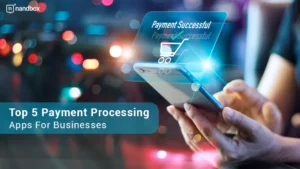App ideas aren’t easy to come by, so I sincerely congratulate you if you have one that you think is worth investing in. Now comes a more challenging step in your app development journey; convincing investors to put their money into funding your app. At times, you might feel like it’s a million-dollar idea, and it is, but you don’t come off as convincing to the investors and end up taking much longer to find investors. We’re here to help. Here are some advice and tips on how to pitch your app idea to investors.
First, How to Find Investors?
Before pitching your app idea, you need to find investors first. Let’s briefly discuss how you can find investors to pitch your app idea to.
- Research Investors: The first step is to find out who could be interested in funding your app. It’s similar to finding the target audience; think about who would find your app idea helpful and usable. Note that there are different types of investors; read about them to determine which is suitable for your app type. Additionally, consider preparing a SWOT analysis presentation to showcase the strengths, weaknesses, opportunities, and threats of your app concept. You can use templates specifically tailored for SWOT analysis presentations to provide a professional and visually appealing way to present your findings to potential investors. Understanding your potential investors’ preferences and priorities can help you tailor your pitch and approach effectively, increasing your chances of securing funding for your app
- Research Similar App Types: Their app developers were once in your shoes before, and they succeeded in finding investors. What type of investors did they land, and who were they? The same investors might be interested in your idea. In any case, you will know the type that might find your niche worth investing in.
- Start the Branding Process: Investors take time to hear and study your idea, and for them, time is money. They’d be more inclined to give you time when they can see the idea clearly through branding. Make a mockup website, create a logo, and devise a domain to show them the whole picture in your mind.
- Design an Elevator Pitch: Imagine having 30 seconds to pitch your idea, which is about the time it takes for an elevator to reach the top floor. How would you convince the person in the elevator of that idea? Practice your elevator pitch and show it to different people and ask them if the app idea is clear as it is convincing.
Secondly, Make an App Prototype
A prototype is a visual mockup of the app’s core design and features, but it’s just a drawing that doesn’t function. There are three types of prototypes:
#1: Hand-drawn prototype: As the name suggests, this is drawn on paper, with every function and screen shown separately to show the app’s workflow. It’s perfect for brainstorming, but not ideal for pitching the idea to investors.
#2: Black and white digital prototype: This is a low-fidelity digital prototype or wireframe for showing the app’s functions without colors distracting from the features. These prototypes are easier and less time-consuming than high-fidelity colored prototypes.
#3: High-fidelity digital prototype: These models look like the actual app, where you can click the buttons and get redirected to different screens. However, it’s not a working app; it just shows what it can do. These are the best prototypes to display to investors.
Why Make a Prototype?
A prototype is a chance to know early on if your app idea is successful. Moreover, it allows you to put your ideas into something tangible to start iterating the prototype until you reach a satisfactory version of the app that you can pitch to investors.
Thirdly, Create a Pitch Deck
This is where all the action happens. A pitch deck is a presentation for investors to discover your business plan. It includes everything about your startup, from launch to goals and milestones. There are AI tools available for pretty much everything these days, you may consider using an AI pitch deck generator to make things easier.
The pitch deck has three components. The first component is related to the market, where you demonstrate the market size for your app and the Lifetime Value (LTV) and Customer Acquisition Cost (CAC). The customer’s lifetime value is the revenue expected from the customer, and the customer acquisition cost is the cost of acquiring that customer.
The second component is product-related. You identify the customer’s pain points and how you can solve their problem. If you can efficiently fix an issue for customers, you are more likely to get the funds. The app is good if the customers want it, but even better if they need it.
The third component is related to your startup team. Show investors that you picked skilled, dedicated team members who can execute the work excellently. Emphasize their work ethics and personalities.
More Tips for Pitching Your App Idea to Investors
- Research your competitors’ successes and failures and discuss both with the investors. Tell them how you can do everything better, the good and the bad.
- Know your unique selling point by heart. You probably know why your app would stand out and build a user base. Show investors why customers would pick your app and not competitors.
- Select a revenue model. This will convince investors that your head is in the right place business-wise. And it will help them visualize how your app will make money.
- Identify and analyze the target audience’s pain points. Remember that your app’s main purpose is to solve the customers’ problems. Imagine yourself as a user and think about how you would feel after using the app. Was using it necessary, and would you pay money to do it again?
- Final tip: It’s all about the presentation. Many good ideas fail to find an audience because of poor presentation skills. We all have strengths and weaknesses points when it comes to presenting ideas. It will help you to work on showing your strong points and improving your weaknesses. And remember to make the speech short to avoid losing their attention. Finally, show them you’re a reliable person they can trust to make sound business decisions. They’re not investing in the product alone; they’re also investing in you.
An alternative to pitching an app idea before development is to make a no-code app and try it out. Then, if it’s successful, you could scale it up or see other options. With the nandbox app builder, you can limitlessly scale up your app and enjoy all the native functionalities without writing code. Try it now!







